California lawmakers want to build more clean energy — and faster

- Share via
This is the March 31, 2022, edition of Boiling Point, a weekly newsletter about climate change and the environment in California and the American West. Sign up here to get it in your inbox.
Remember last month, when I foolishly tasked myself with summarizing all the climate- and environment-related bills that had been introduced in the California Legislature this year, only to grossly underestimate how much legislation I would find?
Well, it’s time for Part 2. This week we’re running through 25 bills dealing with clean energy, the electric grid and climate-friendly transportation. The same caveat as last time applies: This is far from a comprehensive list, so please forgive me if I’ve missed a bill that’s close to your heart. I’ll be writing at least one more legislative roundup, so please send me an email with suggestions.
Alright, here we go:
Clean energy
SB 833: As climate-fueled wildfires and heat waves raise the risk of power outages in California, many homes and businesses have turned to diesel generators to keep the lights on — exacerbating the climate crisis, because diesel is a fossil fuel. This bill would seek to slow that trend by setting up an “energy resilience” grant program, in which local governments would get funding to figure out how they can use clean energy resources — such as solar panels, batteries and microgrids — to ride out blackouts.
- Authors: Bill Dodd (D-Napa), Henry Stern (D-Los Angeles)
- Status: Approved by Energy, Utilities and Communications Committee, referred to Appropriations Committee
- Sponsor: The Climate Center
SB 1075 / SB 1463: I wrote last week about the potential for green hydrogen to help replace fossil fuels in Los Angeles — and the many potential pitfalls. The first of these bills would set up a “clean hydrogen hub” fund within the state treasury, and require energy regulators to study hydrogen’s benefits; the second would establish a “fueling hub” to help heavy-duty trucks fill up with hydrogen instead of diesel at either the Port of Los Angeles or the Port of Long Beach, an idea supported by local officials.
- Authors: Nancy Skinner (D-Berkeley), Bob Archuleta (D-Pico Rivera)
- Status: Approved by Business, Professions and Economic Development Committee, referred to Energy, Utilities and Communications Committee (SB 1075); referred to Energy, Utilities and Communications Committee (SB 1463)
SB 1376: California needs to dramatically pick up the pace of building clean power plants — including solar, wind and geothermal facilities — to have any hope of meeting its emissions goals. This bill would require the Energy Commission to develop a plan for connecting six gigawatts of climate-friendly energy resources to the state’s power grid every year, beginning in 2025 — four times what California has averaged over the last decade and roughly in line with what is needed to reach 100% clean energy by 2045.
- Author: Henry Stern (D-Los Angeles)
- Status: Referred to Energy, Utilities and Communications Committee
AB 2204: Helping fossil fuel workers transition to new jobs is crucial to the clean energy transition — both because it’s the right thing to do and because workers who see a secure future for themselves are much more likely to provide political support for climate policies. This bill would establish the Office of Clean Energy Workforce, tasked with creating or coordinating programs “to retrain and upskill workers for clean energy jobs, and plan and support the physical relocation of the fossil fuel-based workforce.”
- Author: Tasha Boerner Horvath (D-Encinitas)
- Status: Referred to Labor and Employment Committee
AB 2587: California won’t eliminate fossil fuels with solar and wind power alone. The state will also need some amount of “firm” clean energy resources — such as geothermal, long-duration storage or hydrogen — that can keep the lights on during the rare but inevitable multiday periods when there’s not enough wind and sunshine to go around. But state agencies have been slow to require utility companies to invest in those (relatively expensive) resources. This bill would prod the agencies to get a move on.
- Author: Eduardo Garcia (D-Coachella)
- Status: Referred to Utilities and Energy Committee
The electric grid
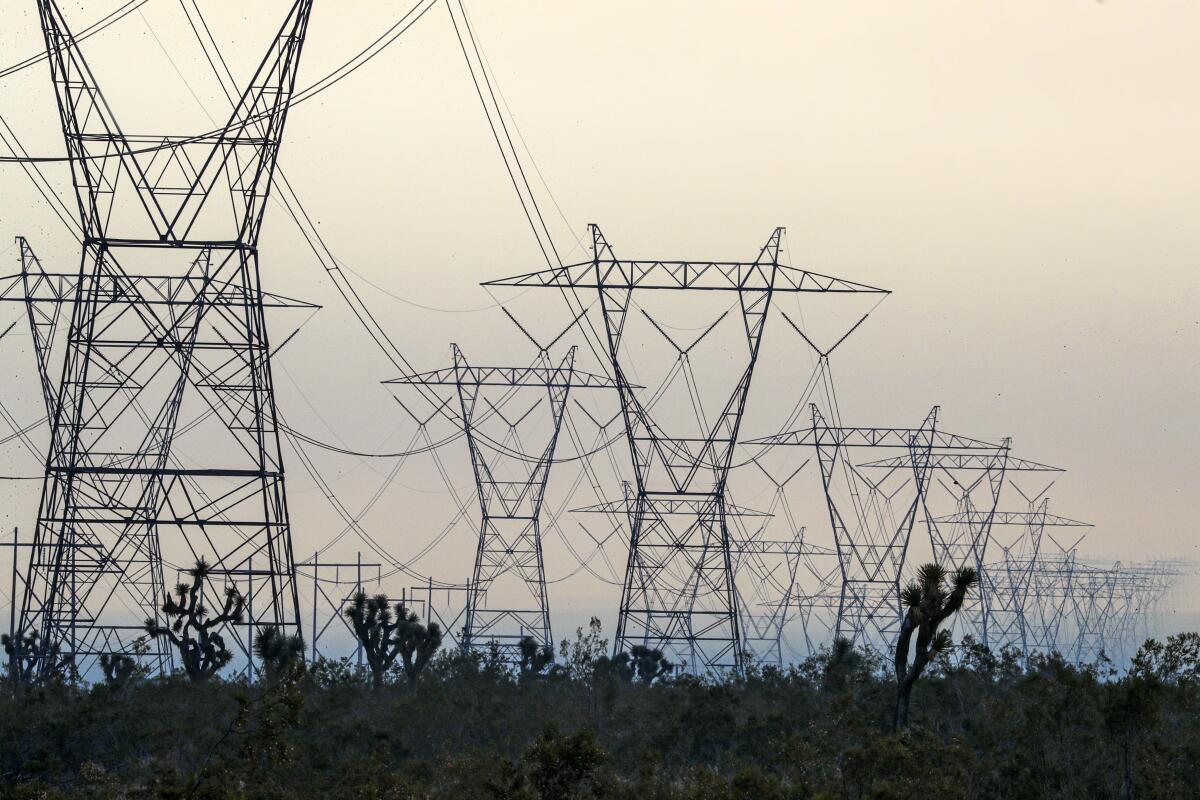
SB 884: Power lines have caused some of California’s deadliest wildfires, and the worst utility offender — Pacific Gas & Electric — wants to prevent further ignitions by spending tens of billions of dollars burying thousands of miles of wires. This bill would help PG&E and other utilities speed up that “undergrounding” process by requiring local governments to approve or deny construction permits within 150 days, and by pushing courts to resolve lawsuits within 270 days. It would also stop utility companies from profiting on undergrounding projects if the buried wires continue to spark wildfires or require fire-related electricity shutoffs.
- Author: Mike McGuire (D-Healdsburg)
- Status: Referred to Energy, Utilities and Communications Committee
SB 887: To achieve 100% clean electricity by 2045 — or perhaps sooner — the Golden State will need a massive buildout of power lines to bring climate-friendly energy from large solar and wind farms to major cities. This bill would try to jumpstart the slow process of building new transmission by pushing regulatory agencies — including the Public Utilities Commission and the California Independent System Operator — to identify the highest-priority power-line projects and begin approving them.
- Author: Josh Becker (D-San Mateo)
- Status: Approved by Energy, Utilities and Communications Committee, referred to Appropriations Committee
SB 1032: Maybe a new state agency could get transmission lines built more quickly and at a lower cost? This bill would create the Clean Energy Infrastructure Authority, modeled after a New Mexico agency that clean energy advocates say has had real success at opening up new electricity corridors. The authority would have the power to acquire land through eminent domain, conduct environmental reviews and borrow money at a lower rate than private utilities, in theory leading to lower costs for consumers.
- Author: Josh Becker (D-San Mateo)
- Status: Status: Referred to Energy, Utilities and Communications Committee
- Sponsor: Clean Air Task Force
SB 1174 : Another effort to speed up construction of electric wires. This one would require state officials to approve all power-line projects that support the buildout of clean energy projects that help keep the lights on. It would also waive penalties for electricity providers that fail to line up reliable supplies because of a third party’s inability to get a transmission project completed on time.
- Author: Bob Hertzberg (D-Van Nuys)
- Status: Approved by Energy, Utilities and Communications Committee, referred to Appropriations Committee
- Sponsor: American Clean Power Assn.
SB 1274: This bill would allow streamlined environmental reviews for transmission lines meant to serve offshore wind farms within or adjacent to Humboldt County, on the state’s North Coast. Local officials hope offshore wind will bring economic revitalization.
- Author: Mike McGuire (D-Healdsburg)
- Status: Referred to Environmental Quality Committee
Solar power
SB 379: There’s a fierce debate over rooftop solar incentives — but most of the combatants seem to agree that it’s way too hard for Californians to get approval to add solar panels to their homes. This bill would require most cities and counties to adopt automated online permitting, most likely though a tool called SolarAPP+. “I’m sure when dishwashers were first invented, there were concerns about impacts on the plumbing system. But we don’t require permits for something like a dishwasher or washing machine now,” the bill’s author, Scott Wiener, told me. “I think simple solar and storage systems are moving in that direction.”
- Author: Scott Wiener (D-San Francisco)
- Status: Approved by Senate; still needs Assembly approval
- Sponsors: Environment California, SPUR
SB 1385: It’s also pretty well-established that going solar is easier for single-family homeowners with cash to spare than it is for lower-income families living in apartments. This bill would require the Public Utilities Commission to create a new program offering financial incentives for solar-plus-storage systems that serve residents of multifamily housing units. The incentives would be available for multifamily housing that serves low-income families or is located in an underserved community — or a high-fire-threat zone where the combination of solar and batteries could help keep the lights on during a public safety power shutoff.
- Author: Dave Cortese (D-San Jose)
- Status: Referred to Energy, Utilities and Communications Committee
- Sponsor: State Assn. of Electrical Workers

SB 1430: Most new homes built in California are now required to include solar panels, under a regulation approved by the Energy Commission in 2018. This bill would suspend that regulation until 2030 in an effort to reduce the state’s soaring housing costs.
- Author: Melissa Melendez (R-Lake Elsinore)
- Status: Referred to Energy, Utilities and Communications Committee
AB 2316: Another solution that many clean energy advocates agree on is community solar — small facilities that serve renters and apartment-dwellers who can’t install solar panels and homeowners who can’t afford to. California hasn’t offered much support for community solar, but this bill would change that, requiring the Public Utilities Commission to set up an incentive program.
- Author: Chris Ward (D-San Diego)
- Status: Referred to Utilities and Energy Committee
- Sponsor: Coalition for Community Solar Access
Clean vehicles
SB 1010 / SB 1305: The first bill would require 100% of vehicles purchased by state agencies to be zero-emission by 2027. The second would rewrite an existing regulation to make it easier for those agencies to buy all-electric light-duty cars in particular.
- Authors: Nancy Skinner (D-Berkeley), John Laird (D-Santa Cruz)
- Status: Approved by Governmental Organization Committee, referred to Environmental Quality Committee (SB 1010); approved by Governmental Organization Committee, referred to Appropriations Committee (SB 1305)
SB 1482 / AB 1738: If California wants to end the sale of gasoline-powered cars by 2035 — the goal adopted by Gov. Gavin Newsom — people will need easier access to electric vehicle charging stations. The first of these bills would begin to tackle that challenge by requiring all newly built multifamily homes to offer at least one electric vehicle charger for each unit with access to a parking spot. The second would require many home developers to add charging stations during retrofits of existing multifamily buildings.
- Authors: Ben Allen (D-Santa Monica), Tasha Boerner Horvath (D-Encinitas)
- Status: Approved by Housing Committee, referred to Transportation Committee (SB 1482); referred to Housing and Community Development Committee (AB 1738)
- Sponsors: Acterra, EV Charging for All, Plug in America (SB 1482)
AB 1814: A quarter of Californians now get their electricity from community choice aggregators, or CCAs — local governments that have banded together to buy power for their residents. But unlike monopoly utility companies, CCAs can’t apply for certain state funds to help clean up the transportation sector, such as money to build electric vehicle chargers. This bill would change that.
- Author: Tim Grayson (D-Concord)
- Status: Referred to Utilities and Energy Committee
- Sponsor: California Community Choice Assn.
AB 2061: California has spent billions of dollars subsidizing electric cars, including charging stations — but it’s not clear how often those charging stations might be malfunctioning. This bill would address that, requiring utilities and other entities that receive public funding for EV chargers to report “uptime,” aka how often those stations are actually functioning. It would also task state officials with determining whether certain areas — particularly low-income neighborhoods — face more downtime than others.
- Authors: Phil Ting (D-San Francisco), Eloise Gómez Reyes (D-Colton)
- Status: Referred to Transportation Committee
- Sponsors: ChargerHelp!, FLO Services USA
AB 2075: This bill would require the California Energy Commission to develop electric vehicle charging standards for all new building construction and retrofits — much as it already does with energy efficiency, water efficiency and rooftop solar standards.
- Author: Phil Ting (D-San Francisco)
- Status: Approved by Natural Resources Committee, referred to Utilities and Energy Committee
Getting out of cars
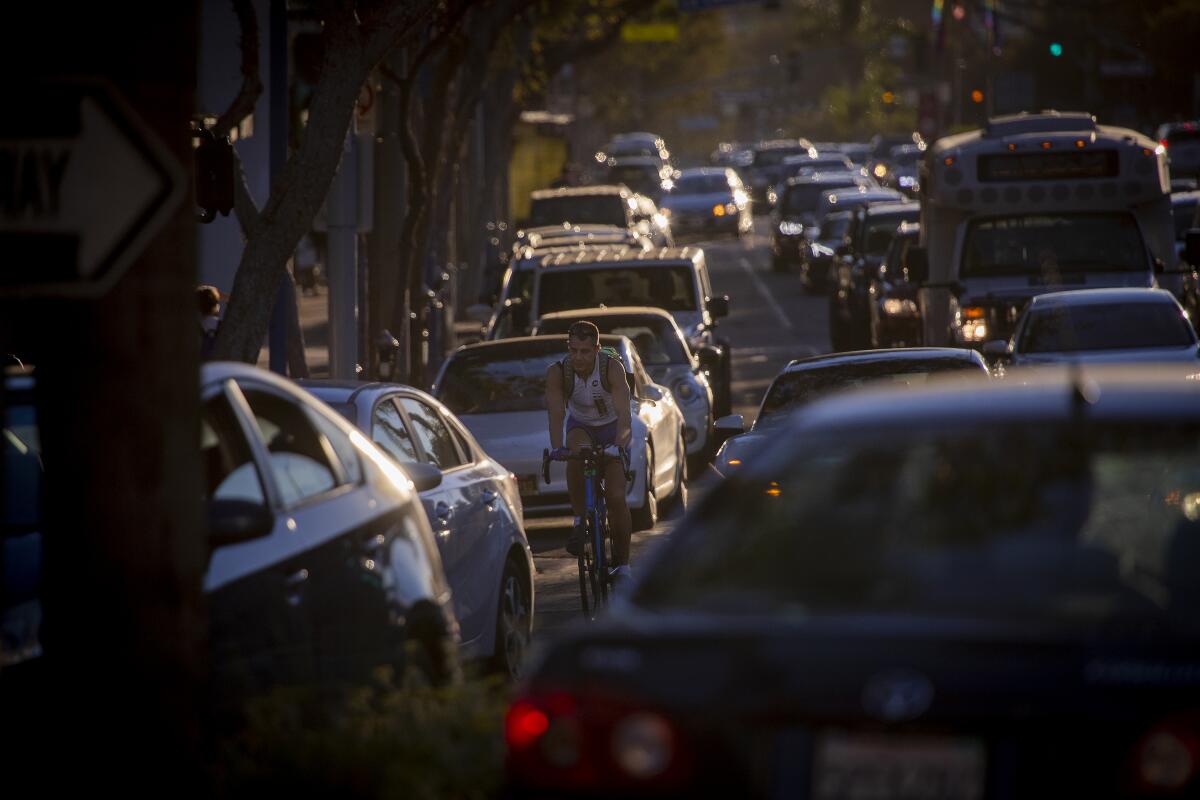
SB 922: Two years ago, lawmakers passed a bill exempting climate-friendly transportation projects — including bike lines, safe walking paths, public transit stations and electric bus infrastructure — from the strict reviews typically required under the California Environmental Quality Act. But the CEQA exemptions run only through Jan. 1, 2023. This bill would extend them by seven years, removing an ironic obstacle to projects designed to slow the climate crisis and limit asthma-inducing local air pollution.
- Author: Scott Wiener (D-San Francisco)
- Status: Referred to Environmental Quality Committee
SB 932: I’ve written previously about safe streets that not only protect walkers and bikers from vehicle traffic but also help the climate, by making it easier for people to get out of their cars. This bill would promote that type of urban design by requiring city and county governments to plan for new bike paths and walkways, including in areas with high numbers of traffic injuries.
- Author: Anthony Portantino (D-La Cañada Flintridge)
- Status: Approved by Governance and Finance Committee, referred to Transportation Committee
AB 2097: In Los Angeles and other car-centric cities, parking lots gobble up vast amounts of land that could be used for apartment buildings, green space or outdoor dining. This bill would take a crack at that dynamic by prohibiting local governments from requiring developers to include a minimum number of off-street parking spots in residential or commercial projects — as long as those projects are within half a mile of a major public transit stop, or a “high-quality transit corridor” with frequent bus service.
- Author: Laura Friedman (D-Glendale)
- Status: Referred to Local Government Committee
So many bills! And so many more that I’ve yet to review. Until then, here’s what else is happening around the West:
TOP STORIES
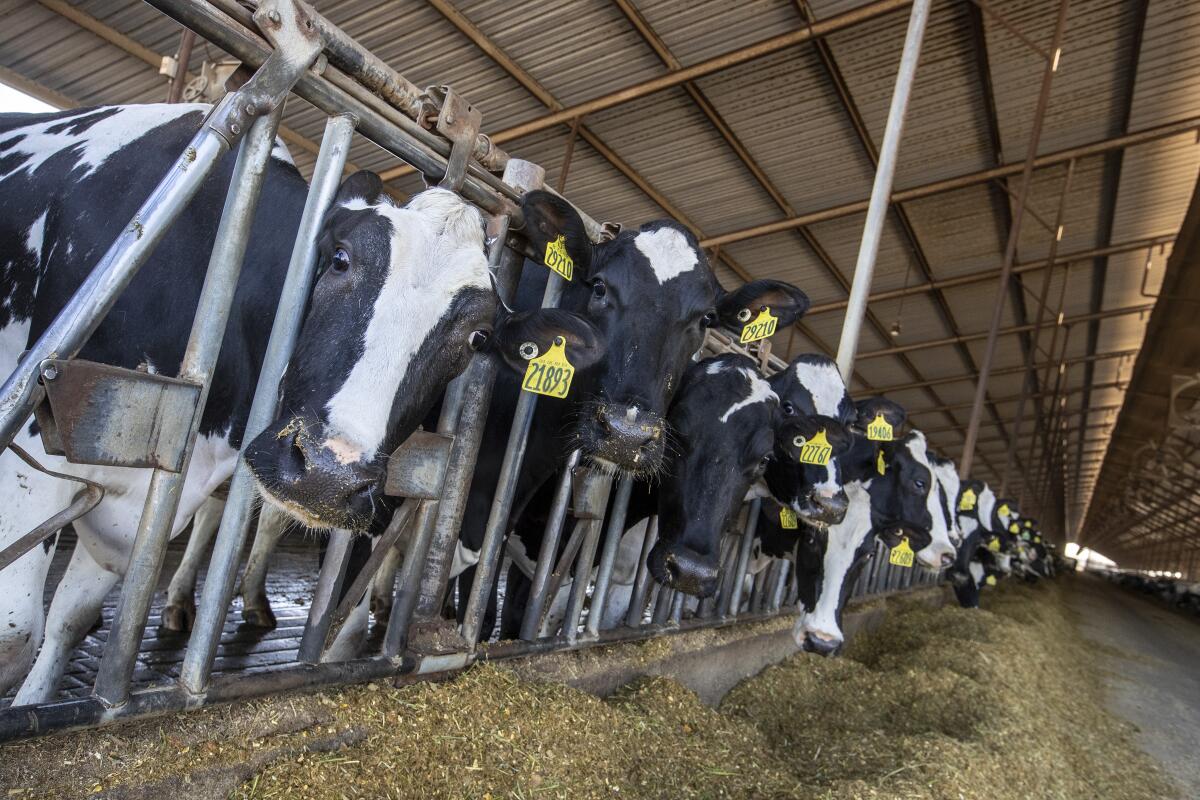
California’s Low Carbon Fuel Standard set off a biofuel boom that’s beginning to reshape the agriculture industry. Check out this great piece by my colleague Evan Halper on the pros and cons of plant- and animal-based diesel, jet fuel and natural gas sourced from farms. Oil and gas companies tout these fuels as climate-friendly, but some environmentalists are skeptical — much as they are about hydrogen, another potentially clean fuel that I wrote about last week. One way or another, scientists say, fossil fuels must go — a point driven home by new research out of New Mexico’s Permian Basin, where an industry-funded study found way higher methane emissions from oil and gas operations than expected, as Morgan Lee of the Associated Press reports.
Gov. Gavin Newsom wants local governments to require more aggressive water conservation — but he’s still not mandating any cutbacks himself. Here’s the latest drought update from my colleagues Hayley Smith and Jonah Valdez, who write that this week’s Southern California rainstorm was “far short of a drought-busting March miracle.” The storm followed a heat wave that brought record temperatures to the L.A. area — the kind of summer-like weather that is becoming increasingly common as the world heats up, as The Times’ Patt Morrison notes in a column on how the region’s gorgeous springs are changing. In the California desert, meanwhile, water agencies are poised to allow construction of surf parks, an ice hockey area and a lagoon-centric Disney development despite the drought — and it’s all perfectly legal, the Desert Sun’s Janet Wilson explains.
Regulators are approving wildfire safety plans from Pacific Gas & Electric and other utilities that they know are “seriously deficient,” according to California’s state auditor. Regulators, the auditor found, haven’t done enough to ensure that PG&E, Southern California Edison and San Diego Gas & Electric are prioritizing infrastructure safety upgrades in the highest-risk areas, Julie Cart writes for CalMatters. Maybe the companies should ask goats for help? I’m only mostly kidding; there are currently 400 goats along the Sacramento River, munching on overgrown vegetation to reduce wildfire risk, per my colleague Nathan Solis.
ENERGY AND ENVIRONMENTAL JUSTICE
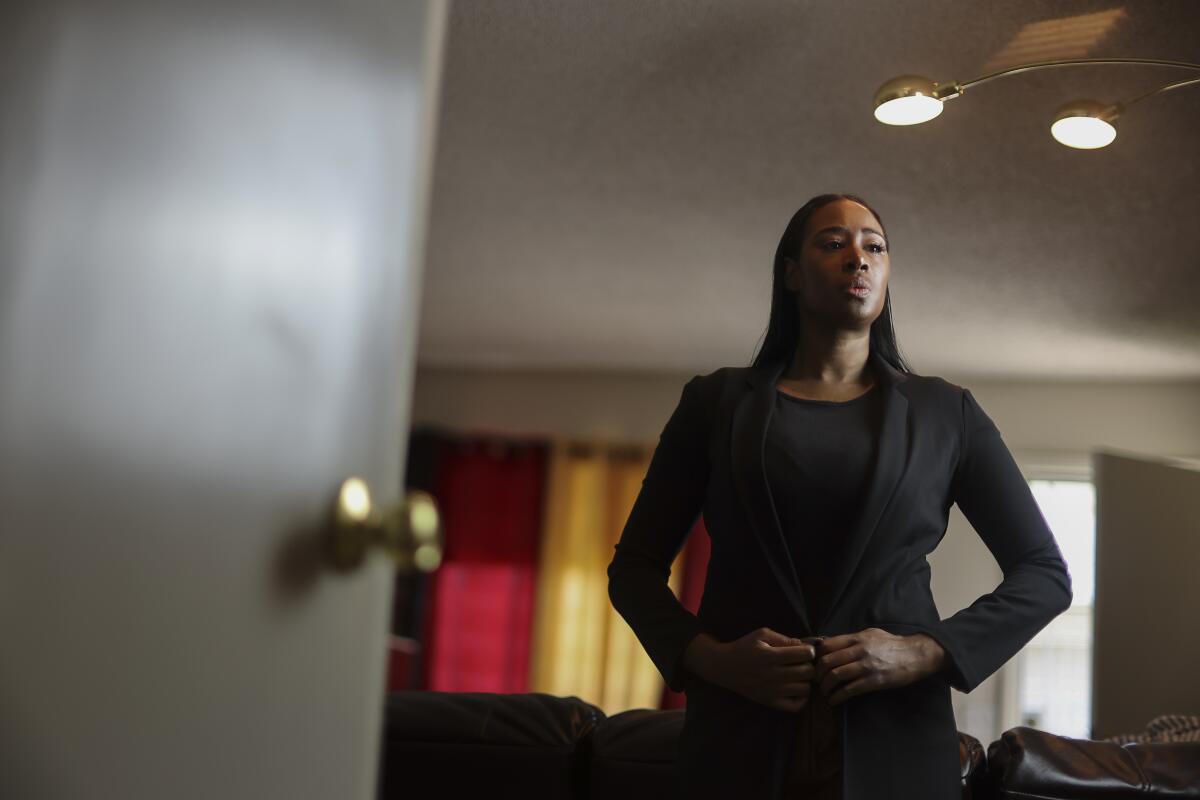
Former Black employees of Tesla’s electric vehicle factory in Fremont, Calif., describe a culture of pervasive racism, saying they were abused with racial slurs from supervisors and co-workers, ordered to carry out demeaning and dangerous work and in some cases fired if they spoke up. Here’s the story from The Times’ Margot Roosevelt and Russ Mitchell, which follows a discrimination lawsuit filed against the Elon Musk-led company by state officials. Tesla has denied the allegations in their entirety.
State regulators arrived at an oil drilling site in South L.A. with a warrant, a locksmith and bolt cutters this week after Allenco Energy canceled an inspection. It’s the latest development in the long-running saga of the Allenco site, which is near the University of Southern California and once spewed noxious fumes that nearby residents said gave them nosebleeds, headaches and respiratory problems, as my colleague Nathan Solis reports. Allenco has refused to pay for plugging the dormant oil wells.
There’s an appalling lack of green space at many Los Angeles schools, depriving students of comfortable play areas and contributing to higher temperatures in certain neighborhoods — especially those home to many Asian, Black and Latino residents. Tony Barboza, a member of The Times’ editorial board, wrote a commentary piece on the benefits of replacing schoolyard asphalt with grass, trees, shaded outdoor classrooms and other living landscapes that can also limit urban heat.
AROUND THE WEST
Five years after ditching Utah because of the state’s efforts to undo Bears Ears and Grand Staircase-Escalante national monuments, the Outdoor Retailer trade show is returning to the Beehive State. But Patagonia, REI, the North Face and other companies intend to boycott, Brian Maffly and Daedan Olander report for the Salt Lake Tribune. In more national monument news, four Nevada tribes want to protect 3 million acres of federal land that might otherwise be overrun by an expanded Navy bombing and training range. The proposed Numu Newe National Monument would be the country’s largest monument on land, Chris D’Angelo writes for HuffPost. In Texas, meanwhile, Interior Secretary Deb Haaland visited El Paso’s Castner Range, which local advocates also want to see protected as a monument. Martha Pskowski at the El Paso Times wrote about Haaland’s visit.
Washington Gov. Jay Inslee vetoed sections of a bill that would have paused solar and wind farm approvals through December 2023 and created a process to give rural counties more input on where renewable energy projects are built. Details here from Annette Cary at the Tri-City Herald. Inslee did, however, sign a $17-billion transportation package with funds for electric ferries, walking and biking corridors and free public transit for kids, Laurel Demkovich reports for the Spokesman-Review.
A new analysis found the Bureau of Land Management didn’t conduct site-specific environmental analyses for more than half of the federal grazing permits it renewed last year. That lack of scrutiny could have serious negative consequences for sage grouse and other wildlife dependent on rangeland habitat, Scott Streater writes for E&E News. And it’s not just rangelands in trouble — half a century after passage of the Clean Water Act, more than half of U.S. waterways are too polluted for swimming or fishing, with rivers in California and Oregon getting some of the worst marks, Theo Whitcomb writes for High Country News. I also learned a lot from this piece by the San Luis Obispo Tribune’s Mackenzie Shuman about how hot water discharges from the Diablo Canyon nuclear plant — scheduled to close in 2025 — have changed the ecology of Diablo Cove along the Central California coast.
POLITICAL CLIMATE
The three leading candidates for District 3 on Los Angeles County’s Board of Supervisors — Bob Hertzberg, Lindsey Horvath and Henry Stern — all have extensive climate credentials. But a recent debate highlighted key differences in their environmental approaches, Ryan Carter reports for the L.A. Daily News. Hertzberg offered a more market-based vision of the clean energy transition, while Stern focused on shutting down fossil fuel infrastructure such as the Aliso Canyon gas storage field. Horvath emphasized her local government experience and the endorsement of environmental justice group Pacoima Beautiful.
Some Southern Californians are driving across the border for cheaper gasoline in Mexico. How has Mexico managed to keep gas prices (relatively) in check as Russia’s war on Ukraine roils global markets? Well, Mexican President Andrés Manuel López Obrador is providing subsidies to oil companies and refineries to keep gas prices under control, as Leila Miller and Alexandra Mendoza report for The Times. It’s only the latest example of AMLO strengthening state control over the energy industry.
The Federal Energy Regulatory Commission pulled back on a plan that would have required strict scrutiny of the climate impacts of new natural gas pipelines and export terminals. The agency’s backtracking followed criticism from West Virginia Sen. Joe Manchin III and other fossil fuel supporters, the AP’s Matthew Daly reports. Manchin, meanwhile, is making a new push to get a climate bill through the Senate — but only if it also promotes oil and gas leasing in the Gulf of Mexico, per the Washington Post’s Maxine Joselow, Anna Phillips and Tyler Pager. And if the U.S. does build more natural gas export terminals, by the way, they could not only harm the climate but also delicate habitat along the Gulf Coast, James Bruggers writes for Inside Climate News.
ONE MORE THING
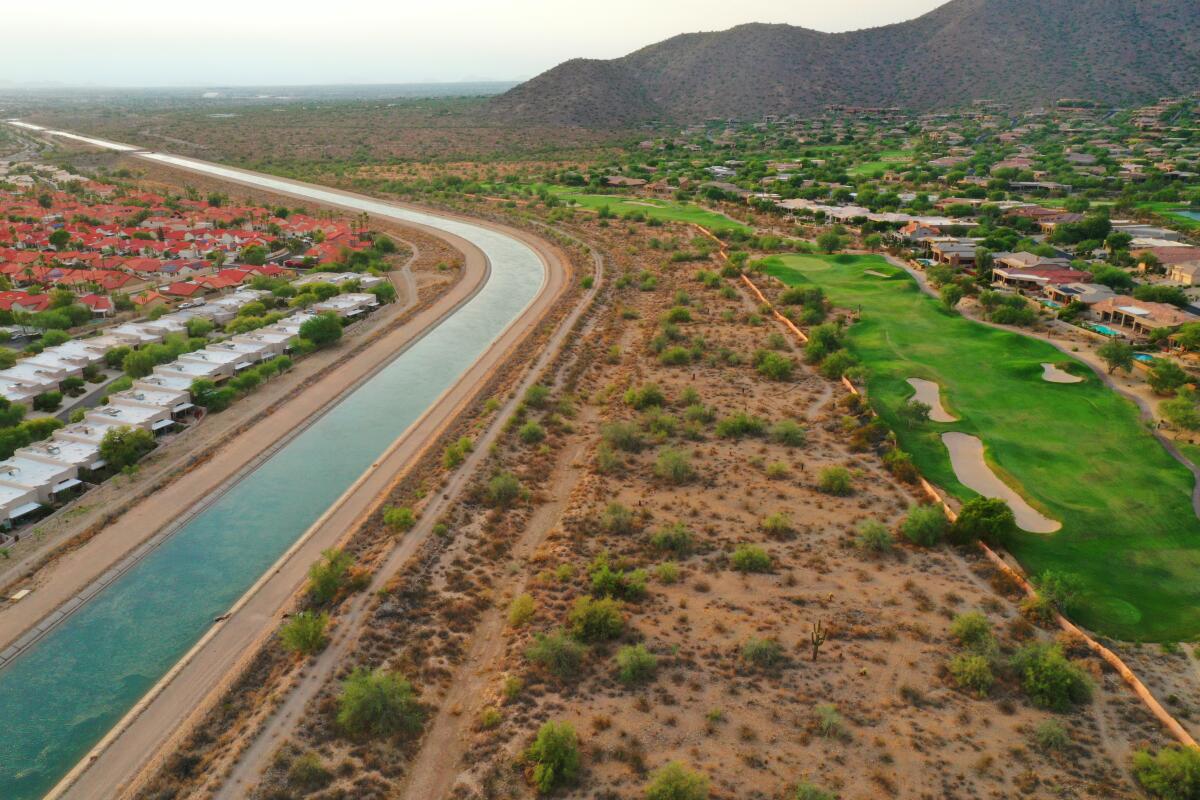
I was in the Phoenix area this weekend to see a Dodgers spring training game, and as usual when I travel to Arizona, I couldn’t help but marvel at the region’s water infrastructure and seemingly endless urban sprawl, and wonder how sustainable it all is.
Just last week, the Census Bureau released data showing that Arizona’s Maricopa County gained more people last year than any other county in the U.S., as noted by Jonathan P. Thompson in his Land Desk newsletter. And the nonprofit news outlet Circle of Blue just finished publishing a fabulous three-part series by Keith Schneider on how the state so badly outgrew its water resources. Global warming hasn’t helped, of course. Temperatures reached the 90s while I was watching the Dodgers on Sunday.
So Arizona has problems. But then again, so does California. As I drove back to L.A., I glimpsed a Colorado River Aqueduct pumping station at the foot of the mountains north of Interstate 10. We, too, rely on water sources that are becoming less reliable.
We’ll be back in your inbox next week. If you enjoyed this newsletter, please consider forwarding it to your friends and colleagues.






